
Buy late Dutch honeysuckle Lonicera periclymenum Serotina £14.99 Delivery by Crocus
Grows up to 10-20 ft. tall (3-6 m) and 3-6 ft. wide (90-180 cm) A part shade lover, this plant is best grown in average, moist, well-drained soils. Tolerates full sun. Adapts to a wide range of soils, including clay and dry soil, but prefers moist, loamy soils. Excellent choice for covering walls, fences, trellises, pergolas, or trees.

Lonicera periclymenum Serotina Honeysuckle Garden Plants
Honeysuckle (Lonicera periclymenum 'Serotina') General Plant Information ; Plant Habit: Shrub Vine: Life cycle: Perennial: Sun Requirements: Full Sun to Partial Shade. but Serotina is especially nice. This late Dutch honeysuckle starts blooming in the summer and pretty much keeps blooming after that. It also forms red berries, which the.

Lonicera per. 'Serotina' Honeysuckle, Purple flowers, Colorful flowers
A classic cottage garden climber with large, fragrant, tubular, creamy-white flowers, streaked dark red-purple, that give it a two-tone appearance. In hot summers, the flowers may be followed by small, bright red fruits. This deciduous honeysuckle flowers later than most varieties, and will keep on producing scent and flowers for several weeks.

Serotina Honeysuckle Spring Hill Nurseries
luh-NIS-er-a per-ee-KLY-men-um Description. Lonicera periclymenum, commonly known as honeysuckle or woodbine, is a deciduous twining vine in the Caprifoliaceae family. It prefers dappled sunlight and moist, well-drained soils but tolerates both acidic and alkaline soil pH.. 'Serotina' Bright pink flowers with a whitish-yellow stem beneath.

Lonicera periclymenum Serotina Klängväxter Växter Växter, Trädgård
Beyond that heavenly fragrance, there's the truly endearing little fact that 'Serotina Florida' is the first vine in the garden to form leaves. In my garden, it starts action right along with the snowdrops. Just leaves until mid-May. But the leaves and stems are flushed red. Flowers come later and last until midsummer.
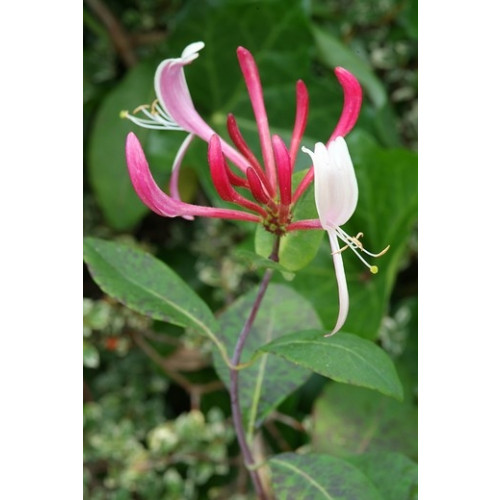
Kamperfoelie Lonicera per. 'Serotina' Kwekerij Klein
Lonicera periclymenum 'Serotina' Click for Second Picture : Family: Caprifoliaceae Hardiness: to Zone 5 Mature Size: 3'-20' Exposure: sun/pt sun Bloom Time: Jul-Sept Moisture Needs: average moisture Price: $ 16.00. Pot Size: Large Band Pot Stock Status:(Out of Stock) Product Code: P1002.

Lonicera Serotina. Garden Climbers for Sale. Letsgoplanting.co.uk
Lonicera Periclymenum Serotina, also known as the Late Dutch Honeysuckle, is a deciduous climbing plant that is native to Europe and Asia. It is a member of the Caprifoliaceae family and is a popular choice among gardeners due to its sweet fragrance and beautiful flowers. The plant can grow up to 6 meters in height and produces clusters of.
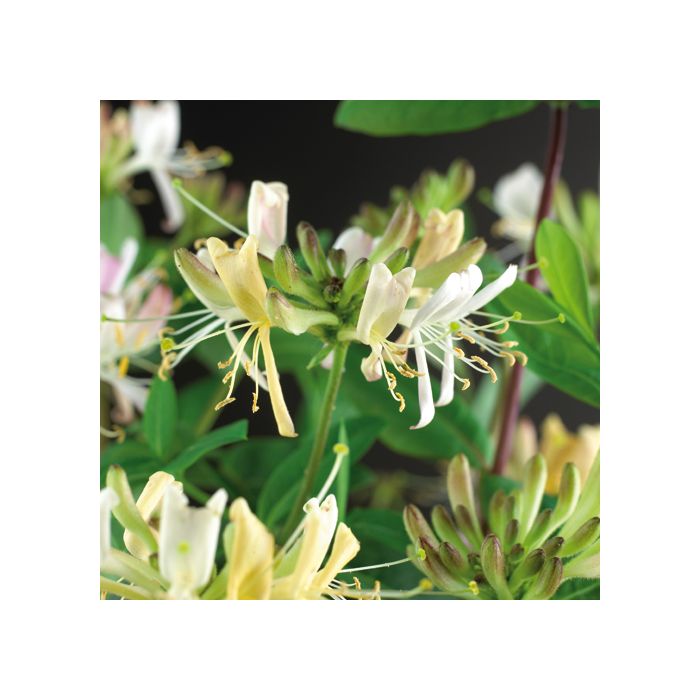
Lonicera per. 'Belgica Select' 75 cm C2 Klimplanten WestFriesland Plant
Serotina Honeysuckle, hummingbirds' delight . Lonicera periclymenum 'Serotina Florida' is a two large-flowering honeysuckle planted in two locations along the wall of the garage out by the alley. The name 'Serotina Florida' does not mean it is native of Florida, since its natural range is North Africa & in Europe as far north as Sweden, & the specific variety was developed in The Netherlands.

Lonicera Serotina. Garden Climbers for Sale. Letsgoplanting.co.uk
Height: 22 feet (6.7 m). Mid to late summer. Two-inch long, fragrant flowers, creamy white inside, purple-red outside fading to yellow as it ages. Ovate paired green leaves, may be evergreen in mild winters. Twining climber. Fertile, humus-rich, well-drained soil. Full sun to partial shade.
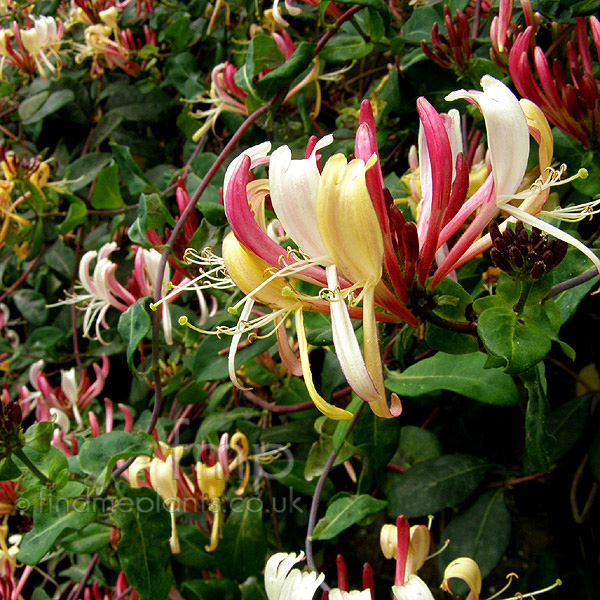
Lonicera periclymenum 'Serotina Florida' (Honey Suckle) Information, Pictures & Cultivation Tips
Lonicera periclymenum 'Serotina' is a fast growing broadleaf deciduous vine or groundcover with purple foliage and red, purple and yellow flowers in summer and fall followed by red fruit. It can grow 4 FT - 20 FT - wide, 3 FT - 20 FT - tall. It contributes glaucous texture to the garden. Attractive to birds, bees, butterflies and hummingbirds. To grow well, it prefers sun - mostly shade and.
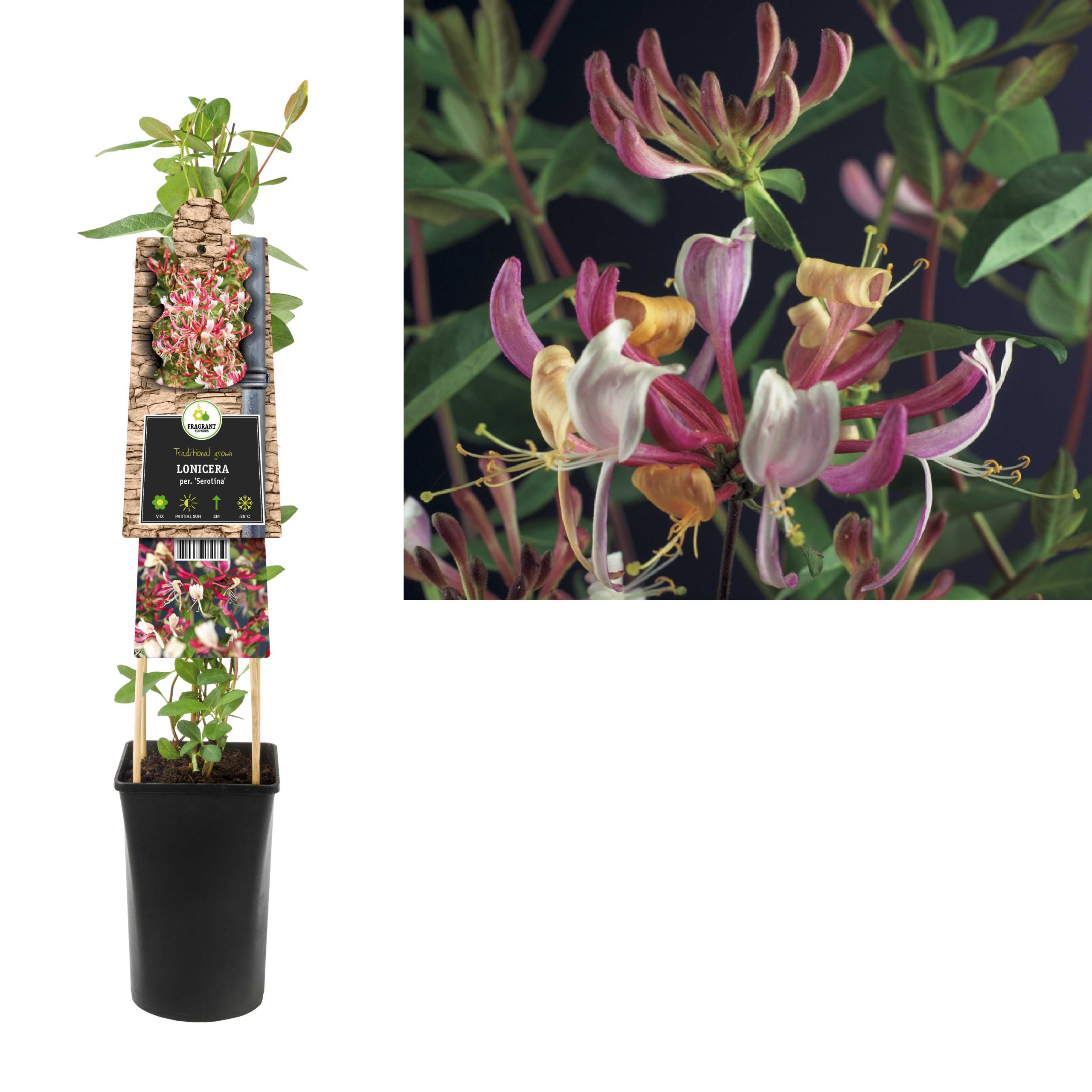
Lonicera per. ‘Serotina’ Groencentrum Buurse
Lonicera periclymenum, commonly called woodbine or European honeysuckle, is a deciduous shrub with a vine-like growth habit. It typically twines and scrambles to 12' (infrequently to 20') tall. It is native to Europe, North Africa and western Asia, but was introduced over time with subsequent naturalization occurring in some scattered areas.
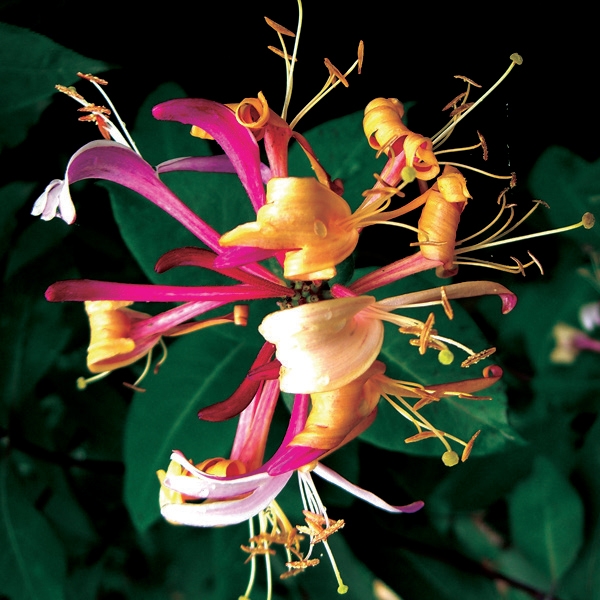
Lonicera periclymenum Serotina Clearview Horticultural Products
Periclymenum vulgare Mill. Lonicera periclymenum, common names honeysuckle, common honeysuckle, European honeysuckle, or woodbine, is a species of flowering plant in the family Caprifoliaceae native to much of Europe, North Africa, Turkey and the Caucasus. [2] It is found as far north as southern Norway, Sweden and Finland.
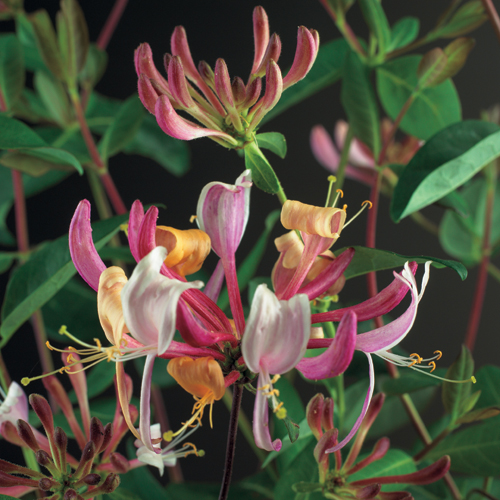
Lonicera per. 'Serotina' Erica Garden
Early Dutch Honeysuckle (Lonicera periclymenum 'Belgica' ) plants bear streaked, raspberry red flowers. A popular woodbine (Lonicera periclymenum 'Serotina') produces flowers that are dark red on the outside and yellow and white inside. Berries Jubilee (Lonicera periclymenum 'Monul') have yellow flowers, giving fruit to bright red berries.
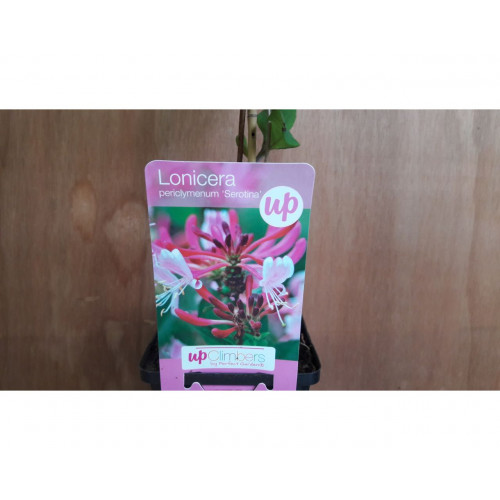
Kamperfoelie Lonicera per. 'Serotina' Kwekerij Klein
'Serotina' is a vigorous, twining, deciduous climber with ovate, dark green leaves and whorled clusters of fragrant, tubular, pale yellow flowers, reddish-purple on the outside.. Lonicera periclymenum 'Serotina' (Late Dutch honeysuckle) Other names: Lonicera periclymenum 'Florida' , Lonicera periclymenum 'Serotina Florida', Lonicera reflexa.
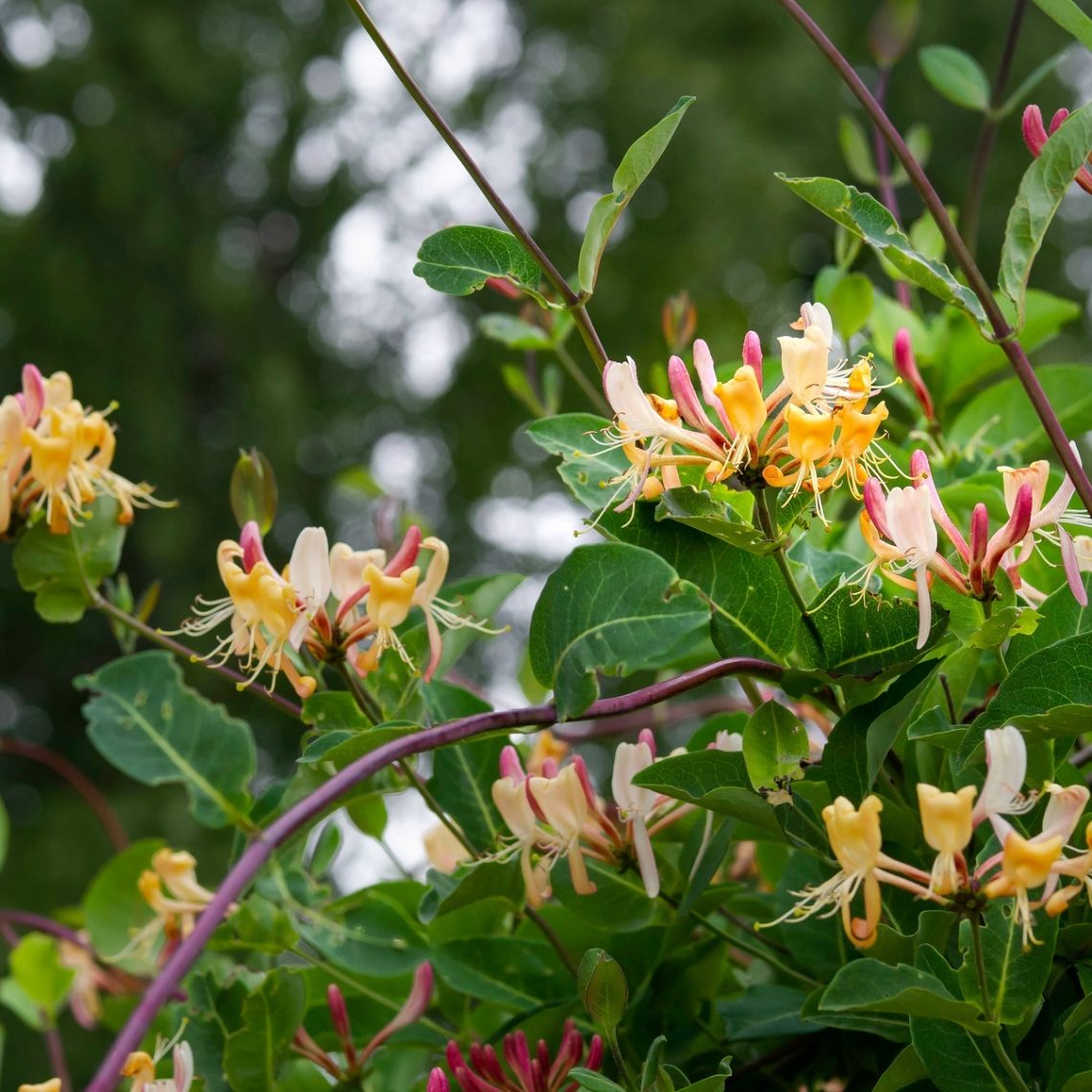
Lonicera per. Serotina
Late Dutch Honeysuckle. Lonicera periclymenum 'Serotina' (S-0350) Each 15.25. Samuel Pepys called it the trumpet flower and wrote, "The bugles blow scent instead of sound." 'Serotina' bears multitudes of spidery-looking, fuchsia-colored buds, which open into pink, sweet-smelling bugles that later fade to a creamy salmon color.
Lonicera periclymenum Serotina
Climbing. Potentially harmful. Fruit are ornamental - not to be eaten. Wear gloves and other protective equipment when handling. Genus. Lonicera can be deciduous and evergreen shrubs, or climbers with twining stems. The tubular or two-lipped flowers, often very fragrant, are followed by red or black berries. Name status.